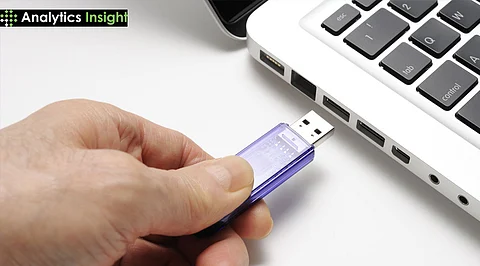

A flash drive, also known as a USB flash drive or thumb drive, is a small, portable data storage device that uses flash memory to store and transfer digital files. It connects to computers and other devices via a USB port and is widely used for backing up, sharing, and transferring files, including documents, videos, software, and media content. Flash drives are plug-and-play, meaning they require no external power or drivers on most modern systems.
Flash drives provide a convenient and reliable method for storing and moving data between devices. They are especially useful in situations where internet connectivity is unavailable or when working across different machines and operating systems. Their durability, portability, and ease of use make them valuable in personal, educational, and business environments—even in the age of cloud storage and online file sharing.
Flash drives utilize non-volatile NAND flash memory, which retains data even without power. Here’s how they function:
Data Storage: Digital information is stored in memory cells using electrical charges.
USB Interface: Enables seamless plug-and-play communication with host devices, such as PCs, laptops, and TVs.
Controller Chip: Manages data flow between the flash memory and the connected device.
Formatting: Typically formatted in FAT32 or exFAT to ensure cross-platform compatibility.
Portability: Small and lightweight—can be carried in a pocket or on a keychain.
Plug-and-Play: Instantly recognized by most systems without additional software.
Durability: With no moving parts, they are shock-resistant and long-lasting.
Cross-Platform Support: Works across Windows, macOS, Linux, and other systems.
Cost-Effective: Affordable storage solution for everyday use.
Limited Write Cycles: Flash memory has a finite number of write and erase cycles.
Small Size = Easy to Lose: Their compact design makes them prone to easy misplacement.
Lower Speeds (on older models): USB 2.0 drives are slower than modern alternatives.
Security Risks: Can carry malware or be lost with sensitive data.
Not Ideal for Large File Transfers: Slower and less efficient compared to SSDs or external hard drives for very large data sets.
Flash drives are used for storing, transferring, and backing up data between devices, such as documents, photos, software, and multimedia files.
Both use flash memory, but SSDs are typically larger, faster, and built for permanent internal storage, while flash drives are portable and externally connected.
Yes. Like any writable storage device, flash drives can carry and spread malware if connected to infected machines.
Yes. Terms like USB stick, thumb drive, and pen drive all refer to flash drives.
Typically, flash drives can last for 10 years or more, depending on usage and storage conditions. However, frequent writes reduce their lifespan.
Not yet. While cloud storage is growing, flash drives remain widely used due to offline accessibility, speed, and ease of use.
